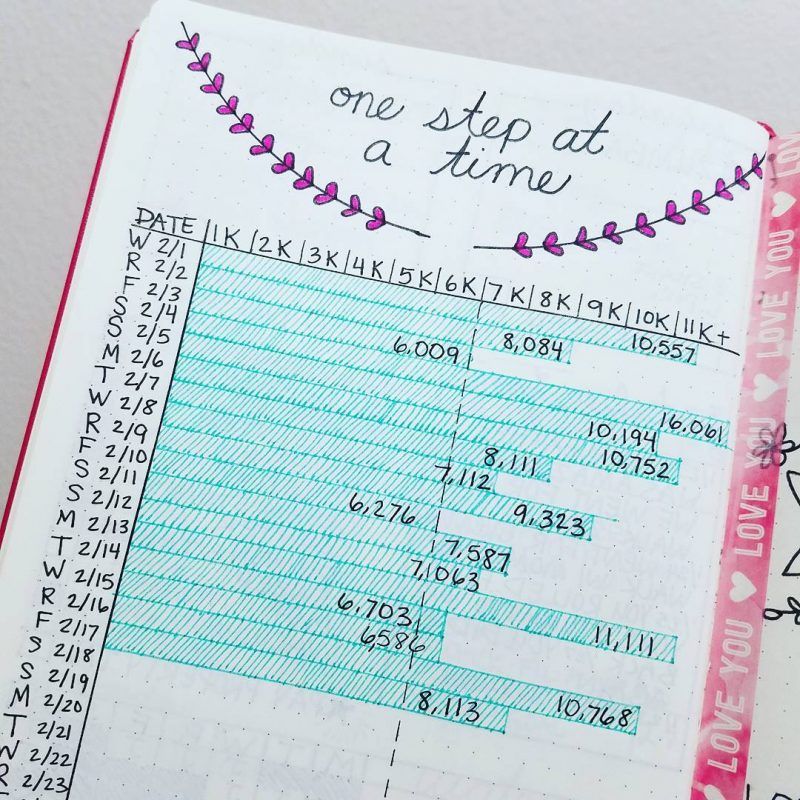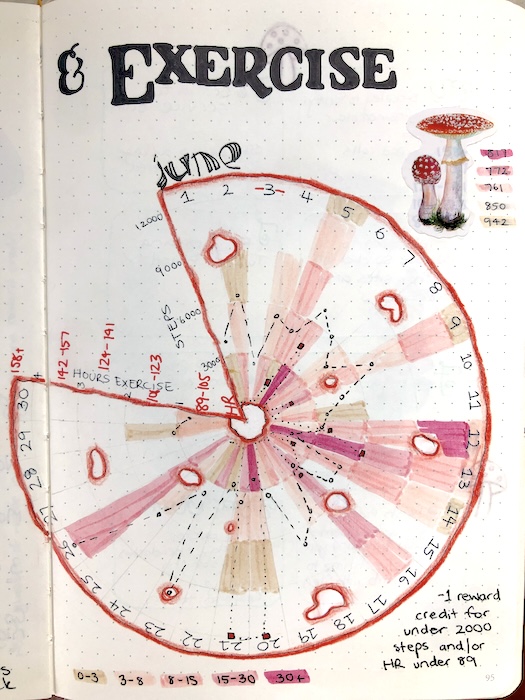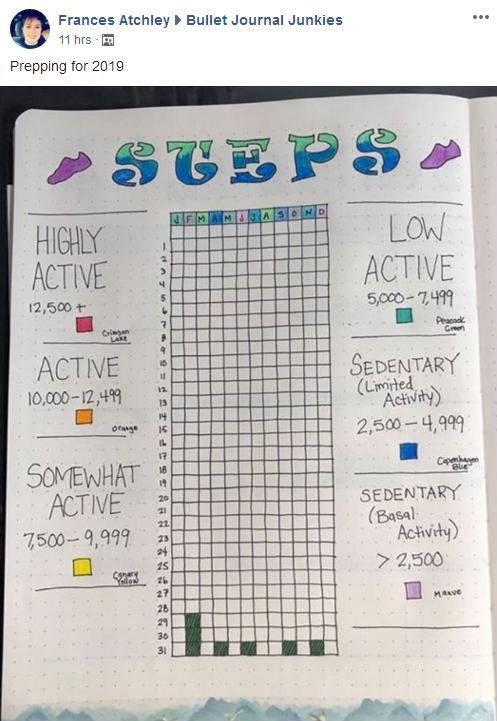I should make it clear at the start that I don’t ‘workout’. I am very much involved in outdoors activities and sports and get my exercise from these and from walking my dog. I periodically work hard on getting and staying fit, then go through periods of inactivity and have to start all over again. Exercise trackers definitely help keep me motivated, and I really notice the drop-off in my activity when I don’t have one in my monthly spreads. I might look into a post about tracking workouts because I know this is popular, but this post is about tracking steps and heart rate, and exercise in general. At the end of this post, you can see a video flip-through of the exercise spreads in my bullet journals.
The logical place to begin is with tracking your steps. It’s fairly well known that a good target for each day is 10,000 steps, and it’s pretty easy these days to track them, as smartphones do it automatically (for example via the iPhone Health app) and there’s a huge range of watches that track steps as well. You could go old-school and wear a pedometer, like we all used to! They’re a lot cheaper than watches and phones and just as effective.
There’s lots of ways to lay your exercise tracker out. People colour in bars to the number of steps they’ve done, or show them on a line graph. The middle example below shows how this would look on a circle tracker. Another method is to assign a colour to each range of steps and colour in a chart with a colour to show the number of steps done each day.



In addition to tracking the type of activity I did each day and sometimes tracking how long I spent doing it, I also tracked whether I had walked my dog or not. The other thing I tracked for quite a while was the amount of time I spent in each heart rate range. It’s important to assess your own ideal heart rates. You will find out your resting rate, the rate at which you will lose weight and the rate at which you will begin to build fitness (aerobic and anaerobic zones). There’s also a ceiling heart rate that you shouldn’t go over on a regular basis as it can affect your rate of recovery and even your health. What I’ve found useful with tracking my time in heart rate zones alongside the type of activity I’ve done is that I’ve learnt which activities are most effective for weight loss and building fitness.
Finally, I’ve used my exercise spreads to include exercise goals. This might be training for an event, or it may just be setting myself a target for kilometres of riding my bike, or time paddling my kayak, or simply steps or time walked. There’s all sorts of fun layouts for this type of spread because you can tailor them to the type of goal you’re trying to achieve. See some examples in the flip-through of my exercise trackers!

